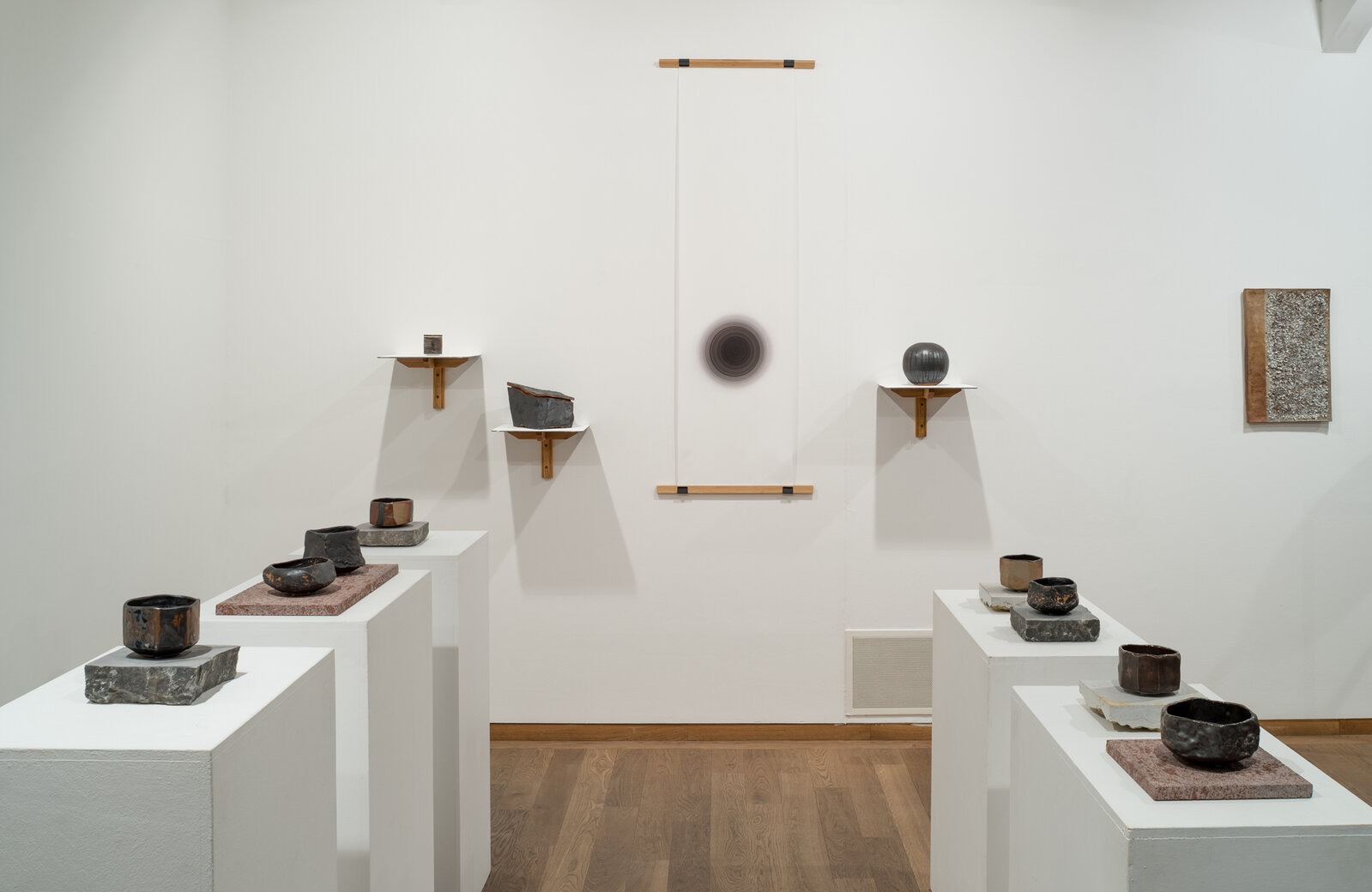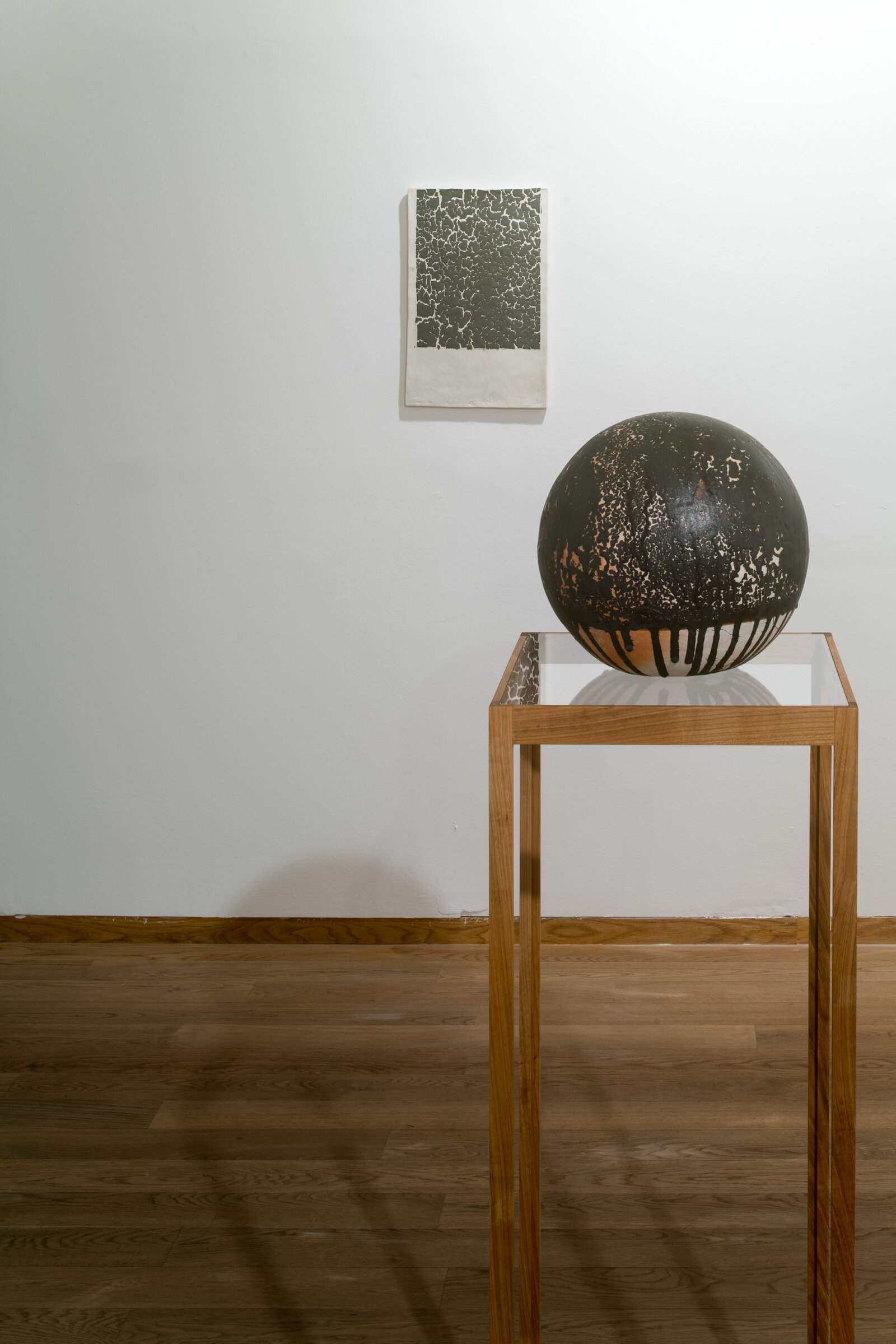"It is never-ending excitement to recreate geological processes and the mystery of origins" - Interview with Julia Néma
Walking in the Balaton Uplands, you can often find some very special materials and shapes. While in everyday life we often pass them unnoticed, in the hands of an award-winning artist, unique geological formations can be transformed into unique objects. Júlia Néma's exhibition 'Liquid Earth', on show at the House of Arts in Veszprém until 10 September, recreates millions of years of volcanic processes in her work.

© Czigány Ákos
Júlia Néma, a porcelain and ceramic designer who has won the Hungarian Design Award and the Noémi Ferenczy Award for her work, is the only ceramic designer in Hungary to have her own high-temperature wood-fired kiln. His work is often inspired by the contact between the Eastern and Western worlds, by Far Eastern influences, and is always preceded by a long period of research during which she travels around the country collecting treasures found in nature. She has also written a book on the background and aesthetics of his technique, and her unique plates can be found in the country's top Michelin-starred restaurants.
How did the Liquid Earth project and the collaboration with the House of Arts come about?
Ever since I was introduced to the aesthetics of Japanese ceramics, I have longed to create something similar at home, here in Hungary without forgetting my own roots. There is no tradition of this technique, so I expected long research, both intellectual and on a material level. In this sense, I can say that it has been a two-decade process. In the last three years, the MMA fellowship programme has given me the opportunity to do more focused research and creative work with the raw materials we have found along our waters. My focus is on Lake Balaton, and all the material in this exhibition comes from there and from the Bakony-Balaton region. Last year I also took part in the Balaton EYE AIR programme, which came about after I was invited to organize this exhibition. When I told Bernadett Grászli, the director of the House of ArtsVeszprém, about the project, which was still in its initial stages, she immediately assured me of her support and invited me to participate, and she became the tireless driving force behind its realisation, for which I am very grateful.
How do you imagine the research process itself?
I'm out in the countryside, getting into the mood. I listen to the silent stones, the earth, the clay. I touch and sample what speaks to me. I developed this method myself; I never learned it. Curiosity drove me, and then the feedback, the beautiful results, confirmed that it was worth digging deep. Experts from many related fields helped me along the way, and I would like to mention Barnabás Korbély, the geographer in charge of the Bakony-Balaton UNESCO Geopark.
What happens next?
I grind, clean, wash and filter these humble treasures that most people pass by every day without paying any attention. First, I apply them to various ceramic materials, porcelain and my homemade high-fired clay and fire them in my wood-fired kiln at temperatures above 1300 degrees Celsius. At this temperature almost everything melts, becomes liquid and then solidifies as it cools, becoming translucent in an irreversible process of transformation. It is endlessly fascinating to recreate geological processes, the mystery of formation, and to make discoveries. If I find the results interesting, I observe the behaviour of minerals and rocks in various forms.
I am seriously engaged in establishing a closer connection with the Earth through my objects, the very Earth I walk on, which sustains us and to which we return. This connection has grown even stronger after building my own kiln, and wherever I go, whether at home or abroad, I sense the landscape, incorporate it into my work through touch and bodily sensations. In doing so, I also practice a sustainable, environmentally conscious approach.

© Czigány Ákos
What exactly are the works in the exhibition?
Basically, I make artworks and objects, as well as utilitarian objects. In this exhibition I show the collected minerals mainly in molten form, as glazes. The Japanese tea utensils, inspired by the basalt formations of the Balaton highlands that greet visitors as they enter, themselves straddle the line between fine art and utilitarian object. The tea house at the Gifu Museum of Modern Ceramic Art at Tajimi has been used in tea ceremonies. They evoke this ceremony and ritual, which can be seen as the essence of Japanese art and culture, in a limited space. The larger space of the exhibition is accessed through two tableaux (Tabula) and a Lithosphere sphere. I brought back materials from my spring trip to the Mino ceramic valley and combined them with my own clay. This is the fusion of two countries, the Japanese and the Hungarian rock, and culture, literally fused together.
What is the main concept of the exhibition?
I composed my works on the Balaton Uplands as an imaginary landscape to be explored. The objects, with their pure geometric shapes, deliberately do not imitate the forms of the natural environment, as these colours and surfaces did not exist before. I didn't want to evoke natural forms, because here we can see the different landscape-forming rocks in a way that probably no one has ever seen them before. I have built sculptures that allow the hot, flowing, expansive materials to assert their beauty, to stretch, to gather, or even to fall like waterfalls. The spheres of the Lithosphere series, the Lenses, the Tabulae, and the Steles, with their varied forms, follow the paths of nature, spontaneously creative and experimental.
In fact, the wonders of nature are brought to life in the works.
Yes, it is true. In the fictional recreation of volcanic activity, when natural minerals are heated to the temperature of erupting lava, I also approach the origins of ceramics as a medium. There are objects that are more reminiscent of suddenly solidifying lava, and others that, with their quiet, still surfaces, are reminiscent of a wetland. A natural geodiversity that inspires the imagination emerges from the different deposits and layers of time.

© Czigány Ákos
You mentioned the technique of firing wood at high temperatures. What can we know about this technique?
I create the objects by hand, according to the shape that the form requires, and then complete them in my high-temperature wood-fired kiln, where they are further imbued with personality. Each firing is unique and unrepeatable, the rhythm of the person firing, the position of the objects, the melting of the wood ashes all contributes to the final result. My active presence in the work is constant from collection to firing.
Willingly or not, the question arises: what are your ties to the region?
There is no other region with so many memories and such strong ties: childhood and adult walks, holidays, winter excursions, stones, scents, the waters of Lake Balaton, all magnetic attractions, endless and inexhaustible. Serious artistic experiences are also linked to the region: the wonderful László Vass collection and the exhibitions at the House of Arts, which we have been visiting regularly for many years. But I could also mention my joint exhibition with the photographer Ákos Czigány at the Castle Gallery in 2016, and one of my first architectural works as a recent graduate ((the mural for the Életöröm Elderly Home, 2006)). Veszprém and the region are important not only for the natural wonders of its surroundings, but also for the consistently high quality of its artistic culture.
In the past, in close cooperation with several restaurants, you have also been involved in the production of everyday utensils. Do you still do such commissions today?
It's been over ten years since I made the country's first unique, handmade, high-heat, wood-fired restaurant serving dishes, and since then hundreds of different dishes have been created, as well as collaborations that still exist today, such as the Salt restaurant and its predecessors. We are currently working with our workshop on a model for them, made with raw materials from the Balaton Uplands. The set we recently designed for the Clarisse restaurant was the first to be made entirely from local materials, the most recent being a serving dish made of volcanic rock from the Balaton Uplands. Every day is the key word, I will never give up making utensils, because I believe that the role of the objects, we hold in our hands every day is very important, our relationship with them shapes our lives, our daily rituals, and if they are also materially connected to the land, the environment we live in, beautiful depths and affections can be revealed.
